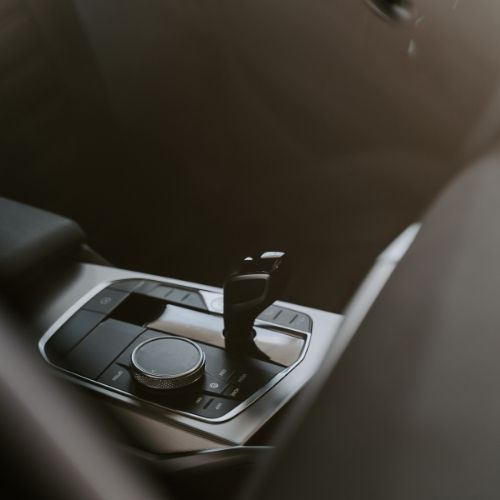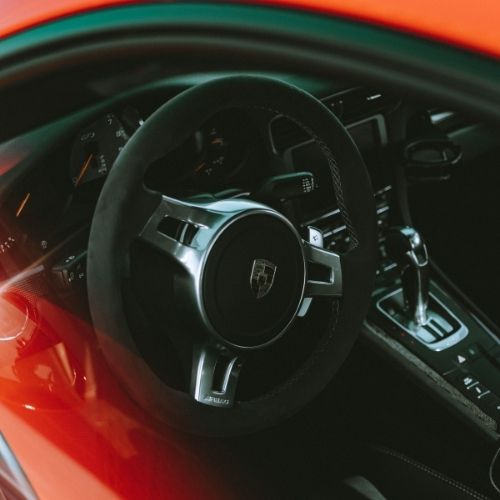We may get commissions for purchases made through links in this post. Thanks for the support! 👍
Most modern vehicles are equipped with an automatic transmission that does not require the driver to press down on the clutch pedal. Shifting has become less frequent and smoother with no need to disengage and re-engage gears, making it easy for many drivers to forget how their car’s gearbox works.

So why does an automatic transmission vehicle have a neutral gear?
An automatic transmission would still need a neutral gear because it is possible for an automobile to roll when in the park or neutral even without any engine power. An example can be illustrated by putting an automobile into drive instead of reverse while parked on a hill.
When the car starts moving forward down the mountain, it can have enough momentum to continue rolling after engine power has been taken away from it, thus making the brakes useless against that force even if they are applied at this point.
The vehicle will also continue if placed in park or neutral while on a hill. A car in neutral will not roll on level ground. Therefore neutral is used to keep the car stationary when parked on a hill while still having access to drive for engine start-up.
This is necessary so drivers can be sure they won’t roll their vehicle down a mountain if they exit it without applying the parking brake. Automatics include this feature because the brakes need to hold when in the park or neutral even when there is no engine power. Without this ability, an automatic cannot safely be left in any gear other than park (if equipped) while parked on a steep grade with its engine turned off.
What is an automatic transmission on a car?
An automatic transmission is a type of motor vehicle transmission that automatically changes gear when accelerating. It is also called an automatic gearbox, self-shifting transmission, or robotized transmission. The number of forwarding gears in the internal combustion engine varies depending on the drivetrain layout, e.g., straight or reversed, and whether it’s a front, transverse or rear-wheel drive application.
Automatic transmissions are more complex than manual ones concerning the number of parts they contain for transmitting power from one component to another. These parts may be different but are often shared between automatics through hydraulics, where many members are swapped out depending on how much torque is necessary at each specific time during acceleration based on engine speed.
This is in contrast to manual transmissions, where the exact gear cannot be changed unless the user has a great deal of knowledge about how gears operate and what each one will do during operation.
The main point in driving an automatic transmission car

The main point in driving an automatic transmission car is that there’s no need for a driver to press down on a clutch pedal anymore because there’s a torque converter between the engine and fluid coupling. This means that there’s no need for manual transmission. You can easily understand what happens inside an automatic transmission car by scrutinizing its different parts and how they work together to make the car move.
There are three basic things needed for an automatic car to function:
A gearbox, torque converter, and fluid coupling. A gearbox is made of gears that can be shifted into different positions upon going from one speed to another, and it is connected to the engine.
The torque converter is like a clutch but with little friction against two surfaces moving in opposite directions; this enables the motor and gearbox to simultaneously rev up without connecting directly through a belt or chain system, unlike manual cars. The third part, which we will discuss more in detail, is fluid coupling because it acts as a “fluid” connection between the engine and gearbox.
- What kind of rims (wheels) do police use?
- 3 More Ways You Can Increase the Mpg on Your Truck
- What Do Aftermarket off-Road Bumpers Weigh?
Two sets of brakes that are supposed to stop the driveshaft
To shift from one-speed level to another, two brakes are supposed to stop the driveshaft. The first is called the brake band, which has brake lining material attached to it; this is what makes contact with the drums when you’re pressing hard on the brake pedal.
Another set of brakes that only applies if the driver has already pressed down on the accelerator pedal is called throttle valve or kick down, where its role is to control how much power is given by the engine onto the fluid coupling so that it can increase its speed in relation with car’s RPM. The interaction of these three parts (brake bands, throttle valves, and fluid coupling) enables an automatic transmission car to go through its different speed levels.
Conclusion
There has been much controversy over whether newer versions of automatic transmissions like those found in cars today require that the driver’s foot be on the brake while using the accelerator to shift. If this were changed, it would no longer need a neutral gear and could remove some of the safety benefits of automatic transmissions today.
![This Is How Cars Have Wifi [And Why]](https://amanandhisgear.com/wp-content/uploads/2020/01/How-do-cars-have-wifi.jpg)

